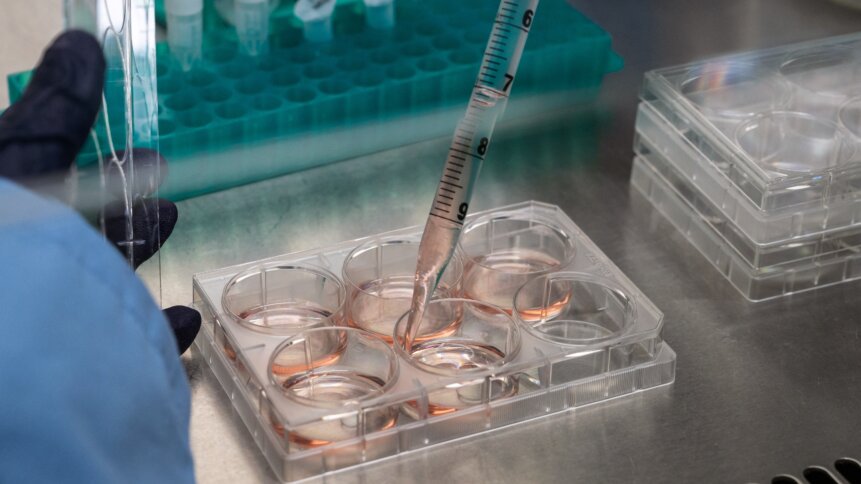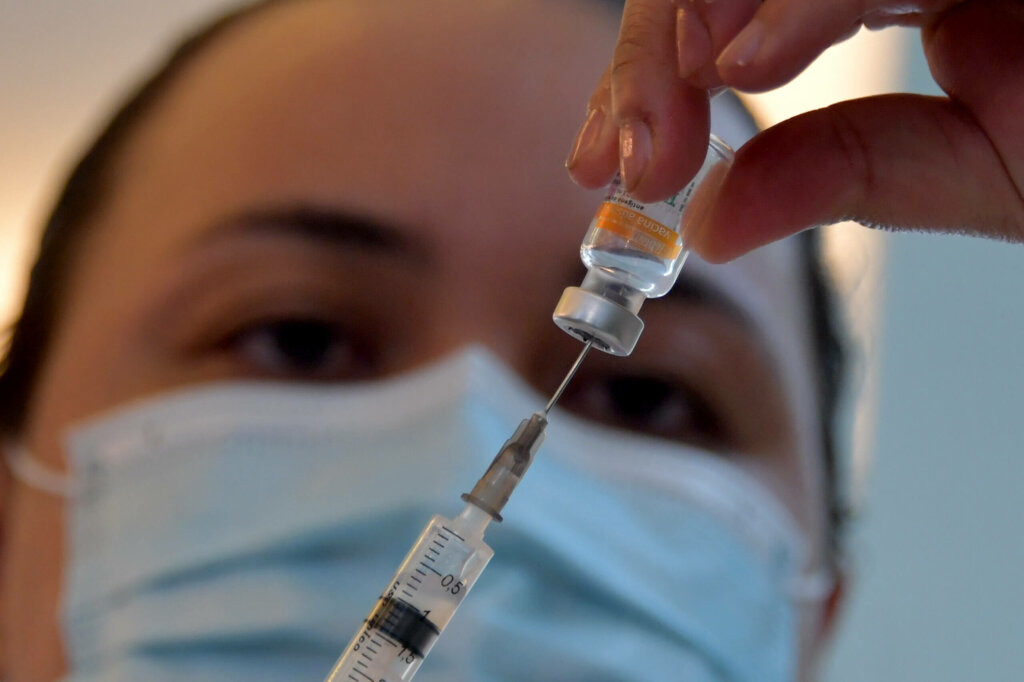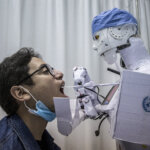Will biotech “eat the world” as Net pioneer predicts?

When web browser pioneer and venture capitalist Marc Andreessen penned his 2011 op-ed prediction that software was on its way towards “eating the world,” he prefaced it by referencing high-profile pivots from hardware to software and vice versa.
At the time, he also noted that tech companies were undervalued on public markets, whereas at different points over the past couple of years, the opposite could be argued, due to the hyper-focus on pandemic-driven digitization and speculative bubbles. Now, the price-earnings ratio of the tech sector appears to be falling again.
In 2011, Andreessen’s crude yet indelible world-devouring metaphor was meant to convey the following thesis: “software companies are poised to take over large swathes of the economy.”
After the digital economy grew dramatically over the ensuing time period, a CIO Dive headline provided a stamp of validation: “10 years later, software really did eat the world.” A Forbes article offered the “yes, and…” that “services are eating software,” by layering hyperscale cloud-based offerings on top of the digitized infrastructure. (Fortunately, these configurations might be more energy-efficient than previously expected.)
As biotechnology harnesses cellular and biomolecular processes to develop society-benefiting technologies and products, with potential market size of US$2.44 trillion by 2028, Marc Andreessen’s venture capital firm a16z is now positing that “biology is eating the world.” They have also noted that software “ate” healthcare relatively late.
So, what happened exactly, and what’s next?
Healthcare has a high degree of complexity and international market differences, particularly around financing mechanisms. Digital health is not yet fully normalized or ethically clear. Unlike other, more straightforward economic areas, technological implementations must be viewed through the lenses of multiple stakeholders.
Andreessen has observed that pure-play software companies are now entering incumbent markets such as healthcare and insurance, and historically when this has happened, the incumbents scramble to digitize their options, often without appreciating the radically different operational and cultural approaches required of them.
He drew an analogy to the media industry, which was an obvious and early front for digitization. In the case of the record industry, there was overwhelming consumer demand for digital music, yet suppliers refused to accommodate it, possibly due to their involvement in price-fixing.
Andreessen remarked that when one layer in an industry effectively commoditizes, the next layer can become incredibly valuable. “You could easily hypothesize the exact same thing happening in healthcare,” he explained. “For example, if more of the actual products and services in healthcare could get commoditized, and over time, you could break the cost curves and actually shrink it, maybe concierge medicine would just explode.”
Andreessen’s thesis is that anything that can become a software product will eventually undergo that transformation, no matter the complexity or institutional resistance. Even biology is, from his firm’s business-focused vantage point, shifting “from an empirical science to an engineering discipline.”

(Photo by NELSON ALMEIDA / AFP)
The future of biotech
Biotech has certainly come a long way. The financial crisis of 2007–2008 dealt a blow to the biotech sector during a critical time in market development but it recovered and majorly contributed to jobs growth.
Well-publicized tools like CRISPR-Cas9 (for genome editing) are a major part of the continued advancements. Scientists are even exploring DNA-based data storage systems.
As is the case with health-supporting wearable technologies, we can expect to see new form factors driving market growth. For example, compressing bioengineering technologies and engineering for mobile compatibility can help with field deployment, both reducing healthcare inequities and expanding markets.
As I’ve written here before, AI has already improved operational visibility in healthcare, measurably boosting process compliance in areas where the problem isn’t systemic. And it could be the discovery that generates countless future discoveries. All of this gives investors and innovators good reason to anticipate major, transformational biotech growth.
However, Andreessen’s firm isn’t shying away from the key differences between software and biotech. Ultimately, the VC firm chose to emphasize the distinction between the empirical, time-consuming, unpredictable aspects of scientific discovery and the incremental, computationally-driven engineering of biotech startups, which more readily permits testing of product/market fit.
For example, rapidly accelerating genomic sequencing exemplifies engineering more than science. It’s even outpacing the well-established, steady, yet increasingly costly advancements in semiconductors. General partner Jorge Conde observed: “When engineering, biology, and computer science come together it elevates bio to a ‘read/write’ paradigm. That is, you don’t just read the code of biology but you can also write, or design, with it.”
YOU MIGHT LIKE

How blockchain adds value to the pharmaceutical industry
The market size for epigenetics is expected to reach US$22.05 billion by 2025, driven by profound applications such as cancer therapy. Conde said that understanding these biological programs can unravel the mysteries of normal cellular development as well as disease development. “That code isn’t necessarily corrupted; it could just be that the cell program has been modified for any number of reasons,” he theorized.
With all of the well-known perils in overzealous tech predictions or overconfident cultural resistance, there is perhaps an element of wise restraint in the venture capital firm’s assessment of probable timelines: “Bio today is where information technology was 50 years ago.”








